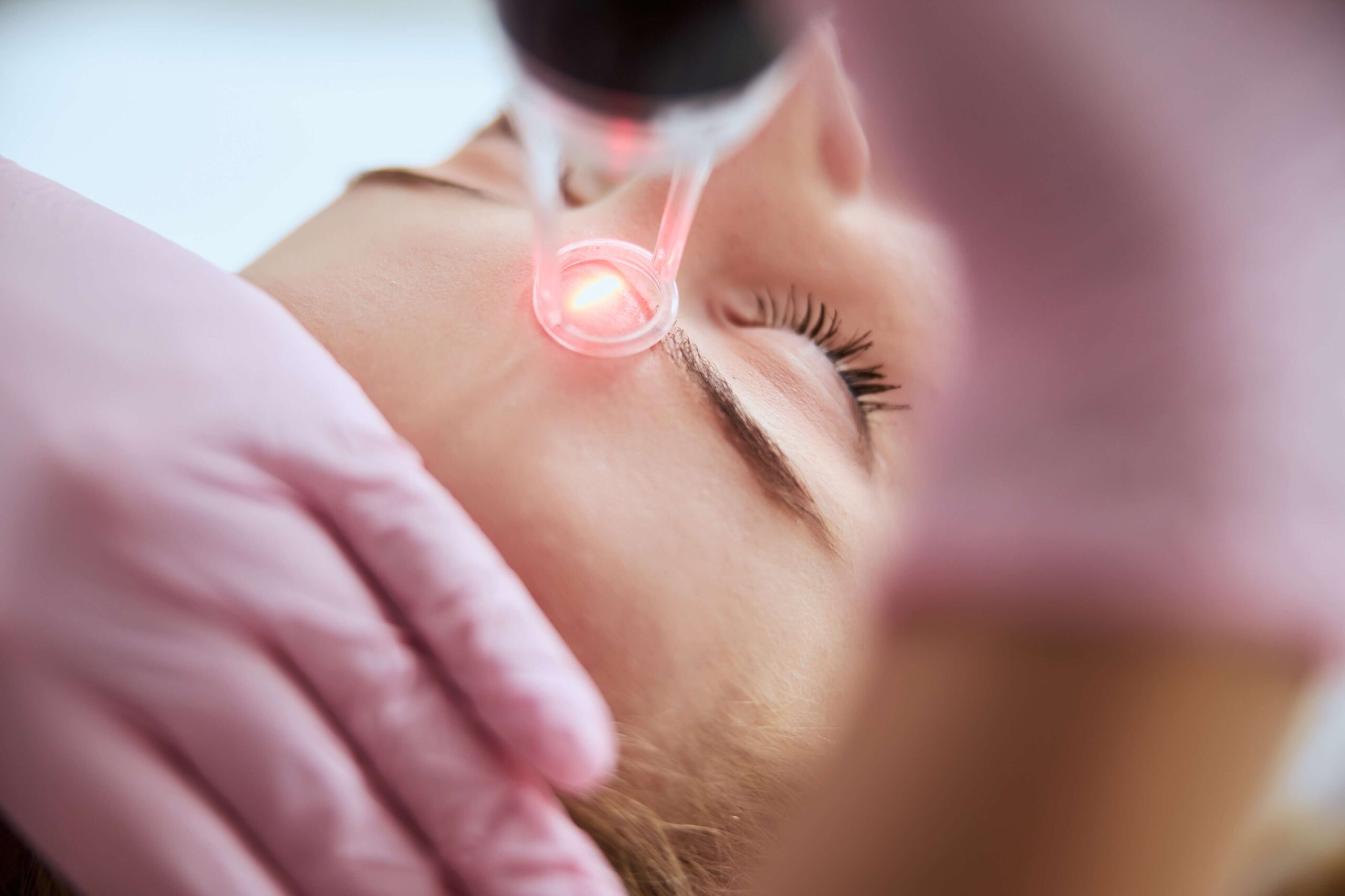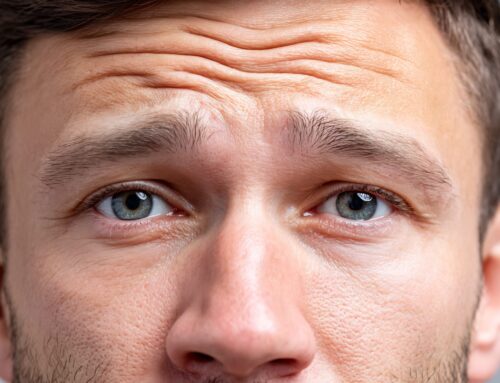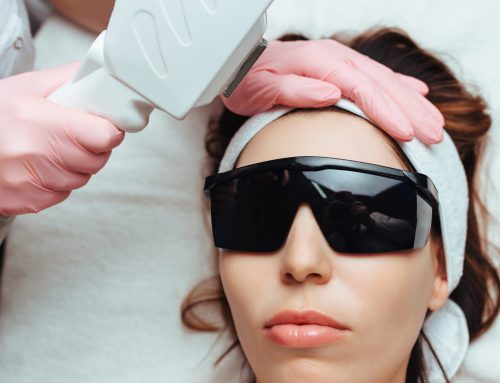
Have you ever wondered if CO2 laser resurfacing is safe for your skin? This powerful treatment can dramatically smooth wrinkles, fade scars, and improve texture, but it’s not one-size-fits-all. Understanding whether it’s right for your skin type is key to achieving beautiful, safe results.
In this article, we’ll explore how CO2 laser resurfacing works, why skin type matters, what risks exist for darker complexions, and what alternatives or precautions can make treatment safer for everyone. By the end, you’ll know what to discuss with your provider before scheduling your procedure and how to prepare for the best possible outcome.
What Is CO2 Laser Resurfacing?
CO2 laser resurfacing is a highly effective cosmetic procedure that uses focused light energy to remove damaged outer layers of skin and stimulate collagen production. This process reveals smoother, firmer, and more youthful skin beneath the surface.
At Stevens Facial Plastic & Laser Center, this is often used to address concerns such as fine lines, deep wrinkles, acne scars, sun damage, and uneven texture. It’s especially beneficial for areas like the face, neck, and around the eyes, where signs of aging are most visible.
The treatment works by vaporizing precise layers of the skin using carbon dioxide laser energy. This controlled injury triggers the body’s natural healing process, encouraging new cell growth and collagen remodeling for lasting rejuvenation.
Why Skin Type Matters
Not all skin reacts the same way to laser energy. One of the most important factors determining how safe and effective CO2 laser resurfacing will be is your Fitzpatrick skin type, a classification system that ranks skin from Type I (very fair) to Type VI (deeply pigmented).
Fair skin tones (Types I–III) typically tolerate ablative lasers, like CO2, well because they carry a lower risk of pigmentation issues. However, individuals with darker skin tones (Types IV–VI) are more likely to experience complications such as hyperpigmentation (dark spots), hypopigmentation (light spots), or scarring if treated too aggressively.
This doesn’t mean CO2 laser resurfacing is completely off-limits for people with deeper skin tones. It simply means the approach must be more cautious and customized by an experienced facial plastic surgeon who understands how to tailor laser settings to your specific complexion.
The Risks and Considerations for Darker Skin Tones
For patients with medium to deep complexions, CO2 laser resurfacing presents unique challenges. The main concern is post-inflammatory pigmentation changes, when the treated skin becomes either darker or lighter than the surrounding area.
This happens because darker skin has more active melanocytes, the cells responsible for pigment. When the laser heats the skin, it can overstimulate or damage these cells, leading to uneven coloration during the healing process.
In some cases, patients might also experience longer recovery times, redness, or textural irregularities if the laser settings are not carefully adjusted. For this reason, the skill and experience of your provider are absolutely critical.
A board-certified facial plastic surgeon understands how to modify treatment parameters and pre-treat the skin, often with lightening agents or retinoids, to reduce risks while still delivering visible rejuvenation.
How CO2 Laser Resurfacing Can Be Made Safer for All Skin Types
With the right preparation and technique, CO2 laser resurfacing can be safely performed on a wide range of skin tones. Here’s how:
1. Comprehensive Consultation and Skin Evaluation
Before scheduling your procedure, your provider will assess your skin tone, texture, sensitivity, and history of pigmentation problems. This helps determine whether CO2 laser resurfacing or another treatment would be most effective and safe.
2. Customized Treatment Settings
Advanced CO2 laser systems allow for fine-tuned control over depth, intensity, and energy distribution. These settings can be carefully modified to minimize thermal damage while still stimulating collagen renewal.
3. Pre-Treatment Skin Conditioning
For medium to dark skin tones, your surgeon may recommend a regimen of topical products such as hydroquinone or vitamin C for several weeks before the procedure. These products help stabilize pigment-producing cells and reduce the chance of discoloration.
4. Post-Treatment Care and Sun Protection
After treatment, following post-care instructions is essential. Keeping the skin clean, moisturized, and protected from UV exposure helps prevent complications and supports even healing.
With diligent care, patients of all skin types can achieve smoother, more radiant skin from laser resurfacing.
CO2 Laser vs. Other Resurfacing Options
If you have a darker complexion or sensitive skin, your provider may suggest alternative or complementary treatments to minimize risk while still improving skin tone and texture.
Fractional CO2 Laser
Unlike traditional CO2 resurfacing, fractional technology targets microscopic zones of skin while leaving surrounding tissue intact. This allows for faster healing and a reduced risk of pigment changes, making it a safer choice for more skin tones.
Erbium Laser Resurfacing
Erbium lasers are gentler and remove thinner layers of skin compared to CO2 lasers. They’re often recommended for patients with medium to dark skin or those seeking less downtime.
Non-Ablative Laser Treatments
These treatments, such as Fraxel Dual or laser toning, heat the deeper layers of the skin without removing surface tissue. They can still boost collagen and refine texture over time with minimal recovery.
Your provider may even combine treatments, using light chemical peels or microneedling to enhance results while minimizing pigment-related risks.
What to Expect During CO2 Laser Resurfacing
Knowing what happens during your procedure can help you feel more comfortable and prepared.
The treatment usually begins with the application of a topical anesthetic or local anesthesia to numb the area. Once your skin is ready, the CO2 laser is passed over the target areas, creating controlled micro-injuries in the surface tissue.
Depending on the size of the area treated, the procedure may take anywhere from 30 minutes to two hours. Afterward, you can expect redness, swelling, and mild discomfort similar to a sunburn. Over the next week or two, the outer layer of skin will gradually peel away, revealing smoother and healthier skin beneath.
Most patients notice significant improvement in tone, texture, and firmness within several weeks, with continued collagen production enhancing results over time.
Recovery and Aftercare: Supporting Healthy Healing
Proper aftercare is key to maintaining even skin tone and avoiding complications, especially for those with medium or darker skin.
You’ll need to keep the treated area clean and apply soothing ointments or healing balms recommended by your provider. Avoid picking or scratching as the skin heals. It’s also crucial to stay out of direct sunlight and use a broad-spectrum sunscreen daily once new skin forms.
Patients can usually resume light activities within a few days, but redness may persist for several weeks, depending on the depth of treatment. Following your surgeon’s detailed aftercare plan ensures optimal healing and long-lasting results.
Who Is an Ideal Candidate for CO2 Laser Resurfacing?
Ideal candidates for CO2 laser resurfacing are individuals with fair to medium skin tones seeking improvement in fine lines, wrinkles, acne scars, or uneven texture. However, darker-skinned patients can also benefit from fractional or modified treatments if properly assessed and prepared.
You may be a good candidate if you:
- Have sun-damaged or aging skin.
- Are in good overall health and non-smoking.
- Are committed to sun protection and aftercare.
- Have realistic expectations for recovery and results.
During your consultation at Stevens Facial Plastic & Laser Center, we will help you determine whether CO2 laser resurfacing or another rejuvenation method best aligns with your goals and skin type.
How Long Do the Results Last?
One of the biggest advantages of CO2 laser resurfacing is the longevity of its results. With proper skincare and sun protection, improvements can last for several years.
Because the laser stimulates collagen remodeling, your skin continues to look firmer and smoother long after treatment. Over time, natural aging will resume, but most patients find their skin ages more gracefully compared to before their procedure.
The Importance of Choosing an Experienced Provider
Laser resurfacing is a precise, high-impact treatment that should only be performed by a qualified professional with deep knowledge of facial anatomy and laser technology.
At Stevens Facial Plastic & Laser Center, we bring years of specialized expertise in both surgical and non-surgical facial rejuvenation. His approach emphasizes safety, customization, and natural-looking results tailored to each patient’s complexion and goals.
By working with a trusted expert, you can ensure that your CO2 laser resurfacing experience is both effective and safe, no matter your skin type.
Areas We Serve
Stevens Facial Plastic & Laser Center proudly serves patients throughout Fort Myers, Naples, Bonita Springs, Cape Coral, Port Charlotte, and Punta Gorda, Florida.
Patients from across Southwest Florida visit the practice for advanced facial rejuvenation procedures, including CO2 laser resurfacing, injectable treatments, and surgical enhancements.
Is CO2 Laser Resurfacing Safe for You?
CO2 laser resurfacing remains one of the most powerful tools for facial rejuvenation. However, safety and results depend on understanding your unique skin type and working with an experienced, board-certified provider.
For fair skin tones, CO2 lasers can dramatically smooth and tighten skin. For medium to darker tones, modified laser settings or alternative treatments can deliver stunning results safely.
If you’re considering laser resurfacing, the best next step is a personalized consultation. We will assess your skin type, discuss your goals, and recommend the safest, most effective approach for you.
Your journey to smoother, more radiant skin begins with expert guidance and care.
Contact us today to schedule your consultation and discover the best treatment option for your skin.


